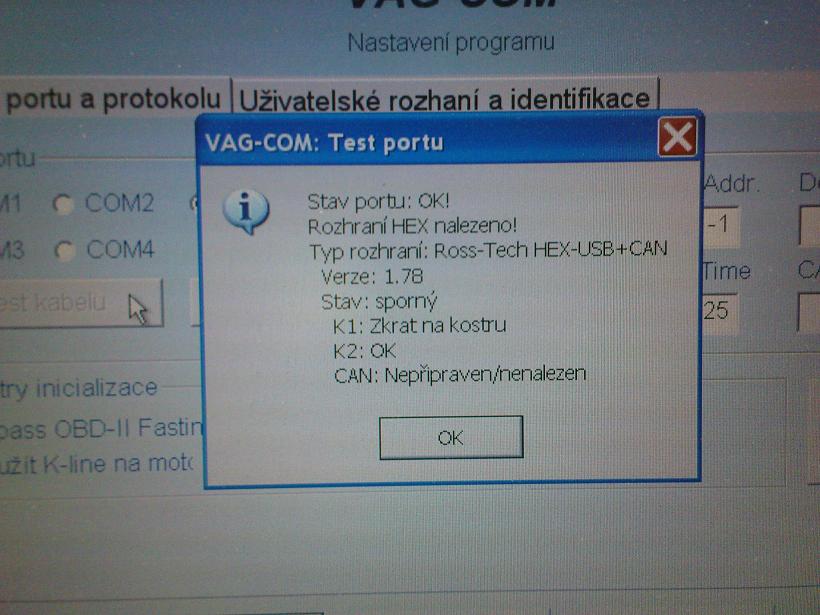Diagnostika Passat B5

S7.10 - VAG VDO dashboards by K-line OBDII diagnostic - VW T5, Passat B5, Skoda SuperB and others * 2J74YAUDI - Audi 2J74Y repair software for CarProg.
Variant (pre-facelift) The B5 version of the, based on the, was launched in 1996 in Europe, 1997 in North America, and March 1998 in Australia. Its platform was shared with the first-generation 'Typ 8D', which was unveiled 2 years earlier, and saw a return to the Passat sharing its platform with Audi's equivalent model for the first time [ ] since the second-generation (B2) Passat, which shared its platform with the second-generation 'Typ 81' / (the A4 is the successor to the Audi 80 line). The Passat introduced a new design language, [ ] first seen on the concept car, for the latest generation of Volkswagens such as the,. The smooth lines, heavily raked windscreens, and smooth underpinnings helped give the B5 Passat a low coefficient of drag, rated at 0.27 (saloon model). [ ] The B5 Passat also reflected Volkswagen's aspirations to push upmarket with higher quality interior trim and the availability of luxury options in order to distance it in the marketplace from contemporaries such as the,,.
This policy was later echoed in the Golf Mk4/Bora/Jetta and Polo. The car featured fully independent four-link front; and a semi-independent torsion beam for front-wheel-drive models or a fully independent suspension on the 4WD models. 4WD was introduced in 1997 as an option for the 1.8, 2.8 V6, 1.9 TDI and 2.5 TDI engines, using a second-generation T-2 based 4WD system to minimise loss of traction. The 1.8- in the Passat and Audi A4 has a lower capacity than transverse applications of the same engine (4.6 quarts in transverse, 4.3 quarts longitudinal).
Three transmission options were available: a 5-speed, a 6-speed (codename 01E) and a 5-speed automatic transmission with. There was also 4-speed, available only in 66kW and 81kW 1.9 TDI, as well as some gasoline models. Sedan (facelift) B5 Passat models built after late 2000, also known as B5.5 models, received minor styling and mechanical revisions including revised, bumpers, tail lights, and chrome trim. A 4.0- producing 275 (202 ) was introduced with a version of the car that included standard. This engine was intended to be a test bed for Volkswagen Group's new technology, which would later make an appearance on the W12 in the Phaeton and, and the in the.
In 2003, a powerful 2.0-litre (TDI) producing 136 PS (100 kW) was added (making the Passat the only mid-sized diesel-powered car sold in the U.S.). This variant was sold from 2003 to 2005. A lengthened platform went on to underpin the 'Passat' that was introduced in China in December 1999 by Shanghai-Volkswagen.
This long- version was rebadged and launched in Europe as the in 2001. Both have a 100 mm (3.9 in) longer wheelbase and length than the standard B5 Passat. An updated version called the Passat Lingyu was released in late November 2005, which has the 1.8-litre turbocharged, the 2.0-litre, and the 2.8-litre V6.
Loading Volkswagen B5 Passat VCDS Info Volkswagen Passat B5 VCDS Info Updated 21 Dec. 2010 Ross-Tech is not responsible for any damage or problems that may result from following these instructions. They are to be used at your own risk. Specific Modules: -Engine: -- KWP-1281, KWP-2000 VCDS works well with all engines available in the U.S. And most engines that users have tested in overseas markets. See the for any limitations for KWP-2000. Idle Speed Adaptation (see your Repair Manual): With engine warmed up, at idle: [Select] [01 engine] [Adaptation - 10] Enter channel 01 Enter an adaptation value between 124 and 132 [Save] Throttle Body Adaptation: Turn the key on but do not start the car.

[Select] [01 - Engine] [Measuring Blocks - 08] Group 060 or Group 98 [Go!] [Switch to basic settings] Once you do this you will see the top right display say ADP RUN. The TB adaptation is being done as soon as you switch to basic settings. Elle varner perfectly imperfect zip hulkshare com download. You will see the values change and hear the TB cycle for the first few seconds then it will stop.
Leave it in basic mode for about 30 seconds, then switch back to normal settings and you're all set. Be sure not to touch the accelerator and make sure the engine is NOT running when you do this!